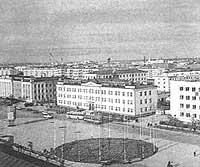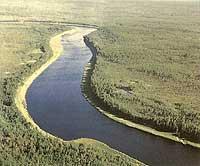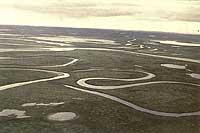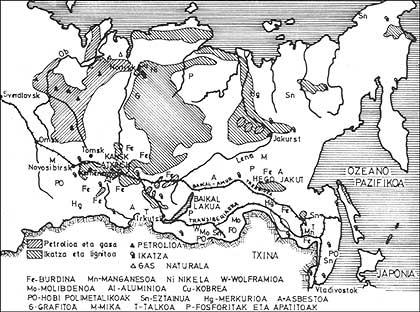Siberian wealth. Exploitation advances

Siberia is the fuel tank of the Soviet Union. Almost three-quarters of the energy reserves it has, and probably half of the world's coal reserves. The Siberian jungle has a fifth of all the world's woodworking material, and about 50,000 of its rivers, Yenisei and Lena, have more energy reserves than in the entire Soviet Union.
Siberia has 10 million square kilometers, two-thirds are always covered with ice and often earthquakes hit large parts.
The quantity and variety of natural mineral stocks present in Siberia allows the implementation of different production centers. But for all this it is necessary that this country know new technologies, especially to exploit its mineral deposits, as the only mineral with aluminum and potassium mixture.
At the 27th Congress of the Soviet Communist Party held in 1986, an urgent task was established for this country: to accelerate technological and scientific progress to increase production and economic development.
In response, the USSR established a Siberian Development Programme for practical assistance and effective development of the country's natural resources.

This program will count until 2000 with a series of Five Year Plans whose objective will cost 5 billion rubles (about 5 billion dollars). The budget for the first 5 years will be 600 million euros. To achieve the objectives of this development programme, Siberian economic growth must be 2-3 times higher than the community average.
There are already more than 60 organizations and unions and Republican representatives involved in the development program. The USSR has already made significant investments in the implementation of several industrial centres.
Western Siberia is an unlimited taiga, a forest of conifers that transforms into tundra to the north. In the last 15 years it has undergone great development. Oil and gas production has gone from one million tons a year to over 200 million tons.
Today, about half of Soviet oil and gas production is in Western Siberia. It will be the main source of fuel until the end of this century. Tyumen is the main oil production area. Geologists have found more than 200 hydrocarbon deposits here and more than half of them contain oil.
The oil and gas centre of Western Siberia returns the production of hydrocarbons, promoting at the same time the conservation and balance of the development of nature. This means building new cities and new industries, especially those that need a lot of energy. The program also establishes the main pathways of geological research.

Oil, currently in operation, is found in the rock strata formed in the Cretaceous (between 100 and 185 million years). But the Soviet Union must also exploit the strata of the lower Jurassic. This would be an important capital. Paleozoic strata are even deeper. These are over 200 million years old and are home to important oil deposits. In fact, the strata located at 2500 and 5000 meters have important reserves of hydrocarbons.
Deposits found by geologists in Kinflamy-Mansi, below the plain of western Siberia, look like prehistoric riverbeds. By registering one of these riverbeds, they have confirmed the existence of very rich sinks.
Although untapped resources still exist in western Siberia, if the Soviet Union wants to increase oil production, in the east it will not be able to do without exploitation.
Using in-depth research and conventional geological data to create theoretical models, exploiters have discovered oil zones with high future output. So far only a few times have been tested, but forecasts seem valuable.

The Institute of Geology and Geophysics of the USSR Academy of Sciences has created a multi-channel seismic technique for its exploitation. This method helps geologists determine the nature and shape of underground strata to determine whether they contain hydrocarbons or water. With this technique, geologists expect to increase the number of productive wells from 30 to 80%. By the current method, engineers can only extract 40% of oil from the well, but this can rise to 60%. With higher oil percentage and better processing, an increase in production is expected.
To increase the oil extraction percentage by 15-20%, the Siberian development program uses physical and chemical techniques.
Gas is one of the most important products for the Soviet chemical industry and electricity production. The main problem with gas is that it requires 300% more pipeline assembly than oil. Soviet engineers are rehearsing to overcome this disadvantage. At present, the natural resources of the Soviet Union are sufficient to meet their needs. Geologists continue to discover new deposits in Western Siberia and production will probably not reach its highest point in this century.
Coal is another important resource in Siberia. One of the objectives of the Soviet Union is to develop methods to extract 600 billion tons of coal before the end of the century. As well as developing magneto-hydrodynamic methods for electricity generation.

Along with this spectacular Siberian growth, it is important that the Soviet Union not forget the ecology of this country. The program has some basic ways to carry out such actions. There is, for example, a specific surveillance program on Lake Baikal. The objective of this program is to achieve a balance between the exploitation of the lake's natural resources and its conservation as a national park.
Soviet engineers have developed effective techniques to minimize the effects of the emission of industrial waste into the atmosphere.
The Siberian program does not only deal with the environment or minerals. It also addresses biological resources and agriculture, highlighting land studies and cold weather technology, especially transport. Economic and social development is also important, including educational and educational facilities.
In recent years the life of the Siberians has greatly improved, on the one hand their working conditions and on the other their standard of living. Increases birth rate and decreases mortality. The new plans have in view the improvement of life in the future.






